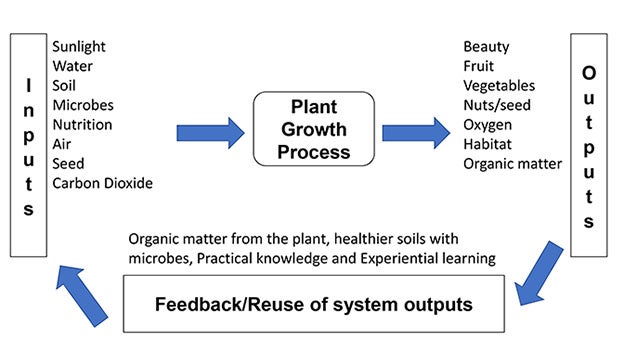Thinking systemically about the plant growth process
Published 7:21 am Thursday, December 29, 2022

- By Mark C. Carroll
|
Getting your Trinity Audio player ready...
|
By Mark C. Carroll
Special to The Farmville Herald
It’s time to start thinking and planning for another gardening year.
I encourage our wisest and most elderly gardeners to keep their efforts manageable and focus more on sharing their expertise.
For everyone else, I suggest maintaining last year’s success and try to learn or experiment with something new. If you have no idea what to do, find a seasoned gardener in your area, and find a way to help them and learn from them. I like to think the point of education is to discover how little we know. Perhaps one of the biggest benefits in seeking the counsel of our elders is that, for the most part, right or wrong, they are happy to share their experience and with a blunt honesty. Realize that like us, they were young once and thought they knew everything there was to know about gardening. With experience and a curious nature, we should all learn and admit there is much we don’t know and some we only thought we knew.
Today, let’s discuss a systems approach to gardening. Most of us use systemic approaches in our finances and work processes, but we use it less in gardening. This is particularly so if we are not necessarily income-reliant on garden production. There are a lot of benefits to systematic gardening, including reliability, sustainability and productivity.
A system is an organized framework for accomplishing goals. Generally, it includes inputs, processes, outputs and some sort of feedback. A basic gardening example would include the following:
• Inputs (sunlight, soil, water, plant material, seeds, fertilizers or amendments);
• Processes (planting, watering, harvesting, removing dead plant matter);
• Outputs (fruits, vegetables, fodder, beauty, soil development and seeds); and
• Feedback, defined as anything returned to the system (practical knowledge, experience, seeds, compost material returned to soil, new techniques, questions).
To map out some of the specifics for your garden this upcoming year, start with identifying the goal or purpose. You must have one or why would you bother putting forth the effort? You may find you can do this at different levels, like the big picture of everything you hope to accomplish or at a micro level where you focus on one specific system, process or plant. Keep it simple at first. If you document how the system works, you may find the feedback step more valuable. You can ask yourself, ‘Did my results match my expectations, goals, or what systemic adjustments could benefit the system?’
The graphic associated with this article shows a very basic example. Depending on the gardener, it can be overwhelming or comforting to practice this systemic approach. If it is overwhelming, like it is for me, just keep it simple. You can select a single plant each year, building your skill and understanding over time. I challenge you this new year to diagram at least one system, and next year, evaluate how accurate you were.
I hope you have your most productive gardening season in 2023; grow well, eat well and live well.





